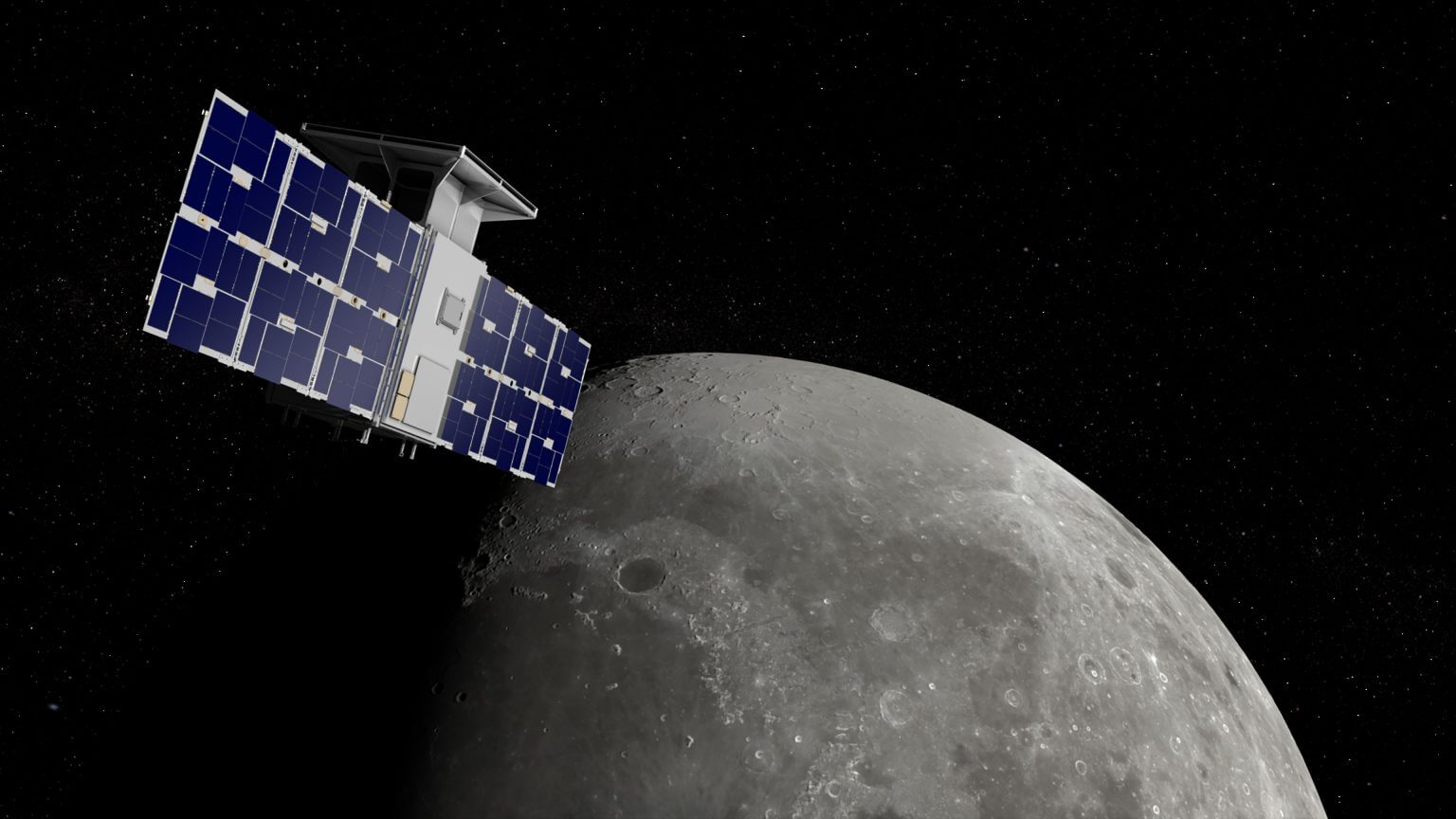CAPSTONE is scheduled to launch between May 3 and May 15.
Early next month, Rocket Lab is slated to launch a pathfinding cubesat mission that supports NASA’s Artemis return-to-the moon program.
The Cislunar Autonomous Positioning System Technology Operations and Navigation Experiment — mercifully called CAPSTONE for short — tips the scales at a modest 55 pounds (25 kilograms). This microwave-oven-sized spacecraft will be lofted from New Zealand aboard a Rocket Lab Electron rocket equipped with a Lunar Photon upper stage.
The launch window runs from May 3 to May 15.

Laying the groundwork
The CAPSTONE cubesat is owned and operated by Advanced Space in Westminster, Colorado, supported by NASA’s Space Technology Mission Directorate through the Small Spacecraft Technology program and by the Human Exploration and Operations Mission Directorate through the Advanced Exploration Systems program.
“We are very proud of the progress the CAPSTONE team has made,” Advanced Space CEO Bradley Cheetham told Space.com. “Through this process, we have already learned a tremendous amount. As we get closer to launch, we are reminded that CAPSTONE is just the beginning of laying the groundwork for the sustainable exploration and development of the moon.”
CAPSTONE’s central purpose is to test and verify the calculated orbital stability of a near rectilinear halo orbit (NRHO) around the moon. That’s the same orbit to be used for NASA’s Lunar Gateway, the planned small space station that will provide astronauts access to the lunar surface.
An NRHO is a member of either the L1 or L2 family of halo orbits and is characterized by having favorable stability properties. Most halo orbits are dynamically unstable, meaning that a perturbation in the position and/or velocity of a spacecraft will grow exponentially over time. However, the NRHOs are nearly stable, with some that are “marginally stable.” NRHOs require some small use of stationkeeping propellant, similar to other halo orbits.
By taking advantage of the precise points between the Earth and moon where the gravity from both is roughly balanced out, spacecraft in an NRHO can save energy to maintain the orbit. It also takes less fuel to enter the orbit because of its elongated shape. CAPSTONE will test and appraise this significantly elongated and halo-shaped orbit for at least six months.
The orbit will bring CAPSTONE within 1,000 miles (1,600 kilometers) of one lunar pole on its near pass and 43,500 miles (70,000 km) from the other pole at its peak every seven days. Compared to more circular orbits, such a path will require less propulsion capability for spacecraft flying to and from the moon’s surface.
Lunar timeline: Humanity’s explorations of the moon

Spacecraft-to-spacecraft communication
The intent of CAPS is to demonstrate that two moon-orbiting spacecraft can communicate and track their positions independent of Earth, pinpointing their place in space.
CAPSTONE was built and tested by Tyvak Nano-Satellite Systems, Inc., a Terran Orbital Corporation in Irvine, California. Stellar Exploration is the propulsion subsystem provider.

Ribbon cutting
On April 1, Advanced Space held a ribbon-cutting ceremony for its Mission Operations Center Facility, complete with a full-size spacecraft model of CAPSTONE on display.
Attending the event was Sen. John Hickenlooper (D-Colorado), chair of the Senate Subcommittee on Space and Science. Also in attendance was Jim Reuter, associate administrator for NASA’s Space Technology Mission Directorate, who called CAPSTONE “foundational” for NASA’s Artemis program and pushing the boundaries of what small spacecraft can accomplish.
Hickenlooper said that CAPSTONE is an example of what happens when the right people are brought together and they move in an orchestrated, synchronized fashion to get things done.
“I think that NASA’s Artemis program is really going to excite this country,” Hickenlooper said. “We are in a serious, very important competition with China and Russia to a certain extent.”
Hickenlooper said that it’s an “all hands on deck” situation “if we’re going to compete on a global basis in science and space.”
Military interest
Earlier this year, Advanced Space entered into a Cooperative Research and Development Agreement (CRADA) with the U.S. Air Force Research Laboratory (AFRL), Space Vehicles Directorate, and the Spacecraft Technology Division to share data collected from cislunar space through the CAPSTONE mission.
The CRADA focus is to share data collected from CAPSTONE as it treks between Earth and the moon. The opportunity to analyze data retrieved from the mission will be beneficial for future mission design and navigation strategies for defense and other customers, military officials said.
The CAPSTONE mission will provide “invaluable insight to fortify our space domain awareness of cislunar space, a domain of increased importance,” said James Frith, AFRL’s program manager for Cislunar Space Domain Awareness, according to an Advanced Space statement.

